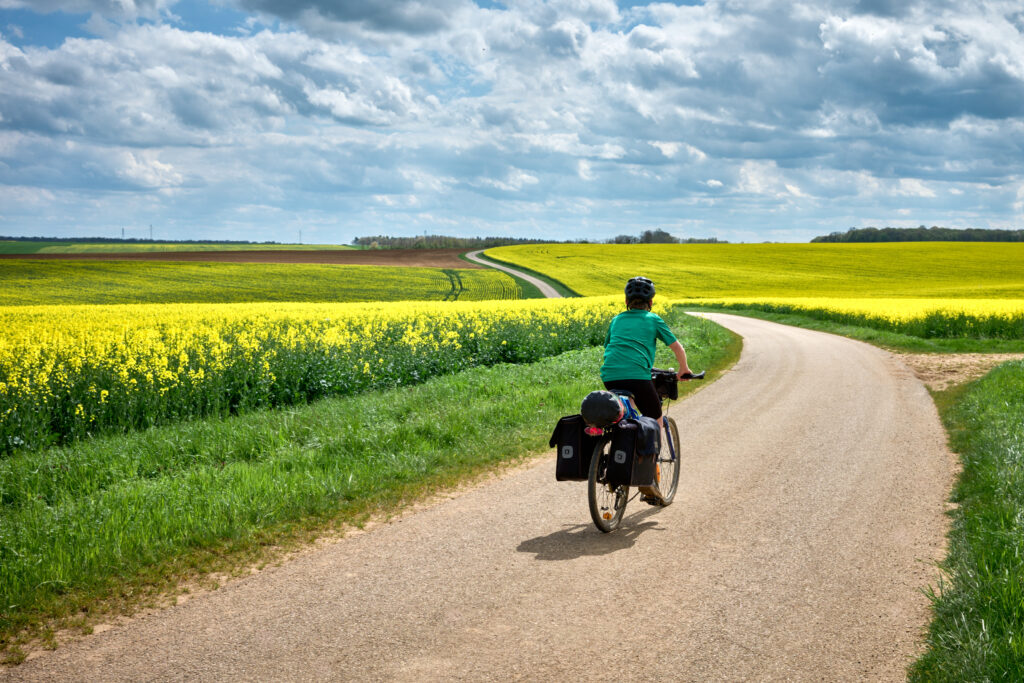
Global warming is one of the greatest ecological challenges we face. The year 2023 was the hottest in the last 100,000 years, and sad records like these keep coming, as countries surpass their highest recorded temperatures, forest fires become longer and more intense, and air pollution reaches record levels around the globe. Fortunately, it is within the power of all of us to reduce our carbon footprint by cutting greenhouse gas (GHG) emissions linked to our lifestyles, in order to curb climate disruption.
Worldwide, transport is the third biggest source ofCO2 emissions. Of these, the car is the biggest source of GHG emissions, as it is the most widely used vehicle in the world. Yet many car journeys could be avoided. Airplanes, on the other hand, produce only 2.5% of globalCO2 emissions, because they are less widely used than cars, but they are the most polluting vehicle in the world over the same distance. It is therefore crucial to reduce the use of these polluting vehicles as much as possible. To achieve this, there are many destinations where you can travel without a plane, and you'll need to opt for a means of transport that's as environmentally friendly as possible. In addition to this, to practice ecotourism and watch your emissions, it can be useful to look for low-carbon accommodation such as ecogîtes or bivouacs, and to eat locally when traveling.
Walking

Walking is the perfect way to travel green, since it represents zero-carbon transport! Unfortunately, walking is all too often overlooked when planning a trip, as it is associated with short distances. However, a great trip is not about the distance covered, but about the experience of that distance. This is the philosophy behind slow travel!
So, choosing walking as a means of transport for eco-travel will allow you to experience incredible adventures and make superb encounters. Some ecological destinations lend themselves more to the exercise than others, since certain rural and natural regions offer a particularly dense network of footpaths. In France, for example, you can enjoy magnificent hikes in the Pyrenees, the Alps, Corsica, or on any other Grande Randonnée: particularly long trails of varying difficulty, enabling you to make a journey on foot over several days or even weeks. You're free to do just one section, for a weekend, which will already be a big step towards reducing your ecological footprint.
The bike

Cycling is another environmentally-friendly means of transport, as it doesn 't emitCO2 or other greenhouse gases. What's more, it covers greater distances than walking, and lends itself to superb travel. Cycle touring gives you the chance toexplore beautiful landscapes, get active, join the close-knit community of cyclists and make some unforgettable encounters. And nothing beats the feeling of accomplishment that comes from covering such distances on your own! But be warned: it's important to be well prepared before your first cycling trip, so that you get the most out of your vacation and don't suffer from the effort or lack of organization.
Fortunately for cyclists, the bicycle is on a roll, and public institutions in all countries are working to develop the network of cycle paths. There are many beautiful cycling itineraries in France, as well as in other countries.
Train travel

For those not tempted by sporty vacations, the train is the best way to travel green. The European rail network covers distances that may surprise you. From France, you can travel by train - and thus travel eco-responsibly- to border countries, as well as to Greece, England, Norway and many more. There are many cities in Europe where you can travel by train without having to take a plane, and there are even a number of ways of getting out of Europe.
Once again, this environmentally-friendly means of transport is on the increase, as France, like many other countries, is working to offer more lines, including night trains. So you can fall asleep in the comfort of a sleeper cab, and wake up to a sunrise over the skyline of Istanbul, or any destination of your choice. A magical experience!
The bus

The bus is a great way to travel green, in that it shares its carbon emissions between many more users than a car. As a result, the carbon footprint per passenger is much lower. Another advantage: more and more bus companies are converting their fleets to environmentally-friendly fuels. Pay close attention to the bus company's commitments and other sustainable tourism labels. Buses are the ideal way to reach destinations where the rail network is not very well developed.
Many companies also offer international bus services, enabling you to travel from France to foreign destinations such asAmsterdam, Milan, Geneva or even Barcelona. Even better: bus companies often offer very attractive fares!
Boats

Not all boats are created equal. While sailboats are a great way to travel green, cruise ships are highly polluting vehicles. Sailboats run on 100% wind power, and therefore emit no GHGs. However, this is a rather inaccessible means of transport, which is rarely offered by tourism providers.
Carpooling and hitchhiking

Car-sharing and hitchhiking should be used as a last resort, since the car is still the vehicle that contributes most toCO2 emissions. However, if the above-mentioned environmentally-friendly means of transport are not possible, they obviously remain one of the most practical ways of reaching your destination. Reduce your carbon footprint per passenger as much as possible by carpooling. This allows you to share the same journey with other users on the same route, so as not to multiply carbon emissions. The best-known platform for this is Blablacar, but you can also find people to share a journey with by other means, such as Facebook groups. Carpool as a passenger as well as a driver, but don't let that stop you from finding other alternatives to the car.
Another way to avoid multiplying GHG emissions is to hitchhike. This time, you stop a motorist on the way. Once again, you're using the car, which is a polluting vehicle, but you're not really increasing emissions, since you're taking advantage of a journey that has already taken place. Before doing so, make sure you follow the safety rules associated with hitchhiking, and that the practice is legal and commonplace in your destination, if you wish to hitchhike abroad.


